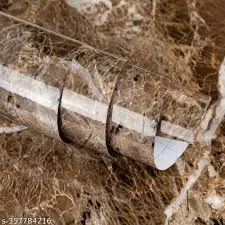- Home
- Manufacturing Process for Duplex Board Production by Leading Industry Manufacturers
Eki . 31, 2024 19:19 Back to list
Manufacturing Process for Duplex Board Production by Leading Industry Manufacturers
The Duplex Board Manufacturing Process An Overview
Duplex board is a versatile and widely used packaging material known for its strength, durability, and quality. It is primarily made from waste paper and is essential in creating boxes, cartons, and various packaging solutions. The manufacturing process of duplex board involves several steps that ensure the product meets industry standards while minimizing environmental impact. This article outlines the key stages in the duplex board manufacturing process.
1. Raw Material Collection and Preparation
The first step in producing duplex board is gathering raw materials, primarily recycled paper and waste paper. Manufacturers often collect paper from various sources, including newspapers, magazines, and cardboard. Once collected, the paper is sorted and cleaned to remove contaminants such as plastic, metal, and other non-paper materials. The sorted paper is then deinked and pulped to create a slurry, which serves as the base for the duplex board.
2. Pulping Process
In the pulping stage, cleaned paper is mixed with water and chemicals to break it down into fibers. This mixture is then subjected to mechanical and chemical processes that separate the fibers from the ink and other impurities. The resulting slurry consists of clean pulp ready for further processing. Quality control is crucial at this stage, as the cleanliness and strength of the pulp will directly impact the final product's quality.
3. Sheet Formation
After pulping, the slurry is transported to a forming machine, where it is spread over a moving screen to allow excess water to drain. As the water evaporates, the cellulose fibers bond together to create a wet sheet. The sheet is then pressed to remove more moisture and increase its thickness. This step enhances the strength and structural integrity of the duplex board.
duplex board manufacturing process manufacturers

Once the sheet is formed, it undergoes a drying process where heated rollers remove additional moisture and cure the fibers, enhancing the paper's quality. The dried sheet is then passed through calendering rollers, which smooth and compress the sheet to achieve the desired thickness, finish, and surface quality. A smoother surface is essential for printing and provides the board with a visually appealing appearance.
5. Coating
To improve the duplex board's aesthetics and functionality, a coating is often applied. This coating may consist of white pigment, which enhances brightness and creates a suitable surface for printing. The coated duplex board is more attractive and has better performance in graphics printing. Manufacturers may offer different finishes, including glossy or matte, depending on customer requirements.
6. Cutting and Packaging
The final stage involves cutting the duplex board into specified dimensions according to customer needs. The sheets are precisely cut into various sizes, ready for shipping. After cutting, they are carefully packaged to prevent damage during transportation. Manufacturers strive to ensure that their products are delivered in optimal condition, meeting client specifications and expectations.
In conclusion, the duplex board manufacturing process is a complex but well-structured series of steps that transform recycled paper into a valuable packaging material. With a strong emphasis on sustainability and quality, duplex board remains an essential product in various industries, contributing to effective packaging solutions while promoting environmental responsibility. As the demand for eco-friendly products continues to rise, duplex board will likely play an even more significant role in sustainable packaging strategies.
Latest news
-
High-Quality Decor Base Paper for Melamine Decorative Surfaces
NewsJul.26,2025
-
High Quality Duplex Board for Printing & Packaging Solutions
NewsJul.25,2025
-
High-Quality Furniture Decoration Paper for Stylish Interiors
NewsJul.24,2025
-
High Quality Duplex Board Paper for Packaging Solutions
NewsJul.23,2025
-
Premium Duplex Board Paper for High Quality Printing & Packaging
NewsJul.22,2025
-
Premium Duplex Board | Food Packaging & Printing Solutions
NewsJul.22,2025

